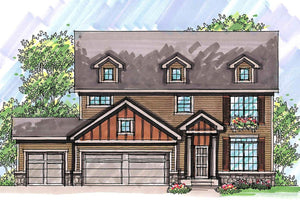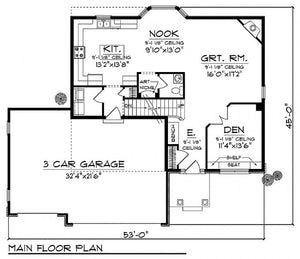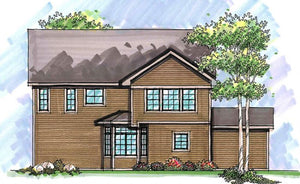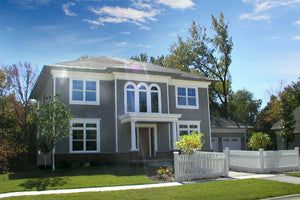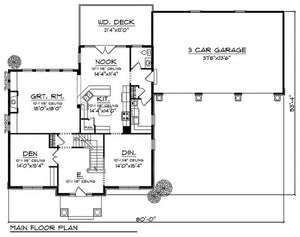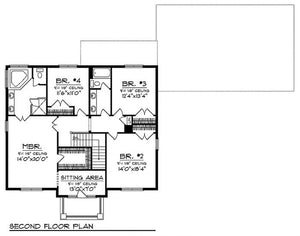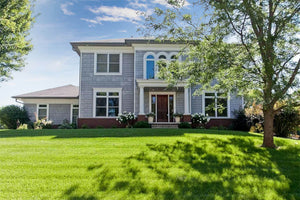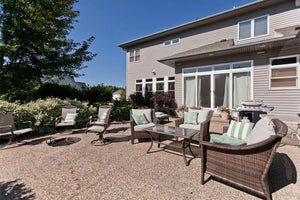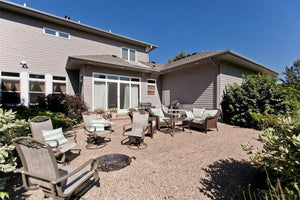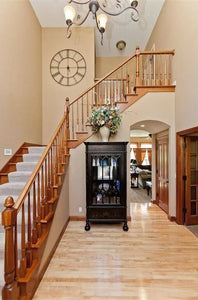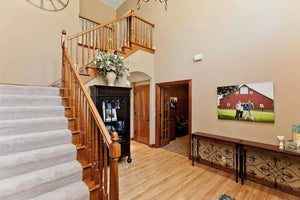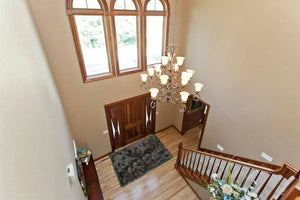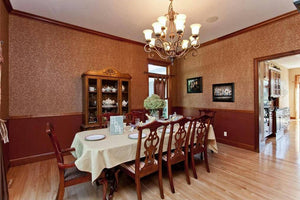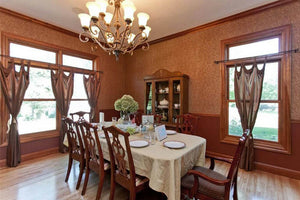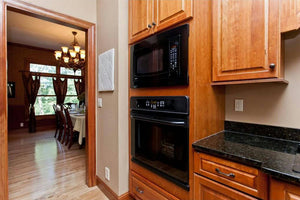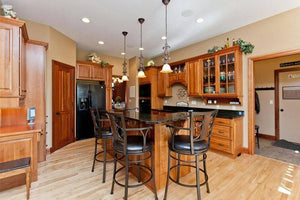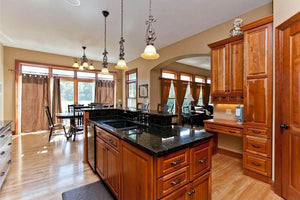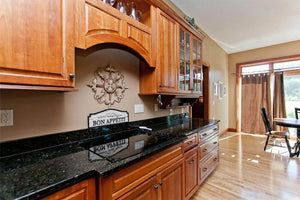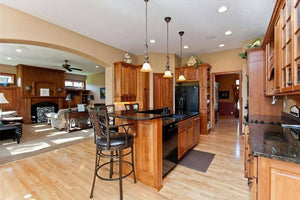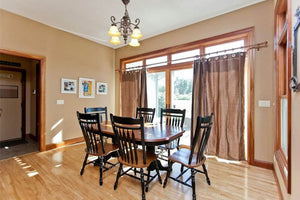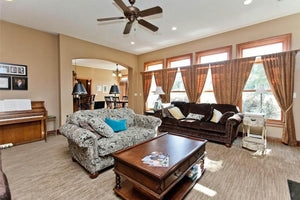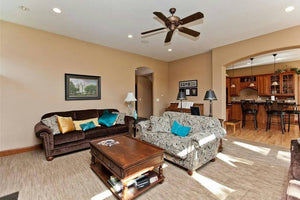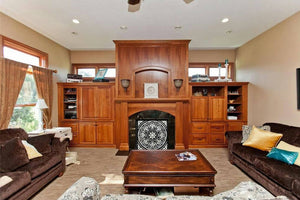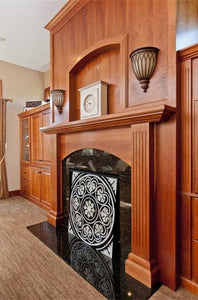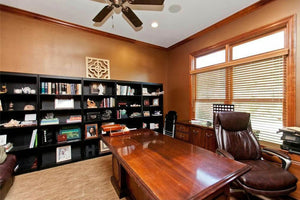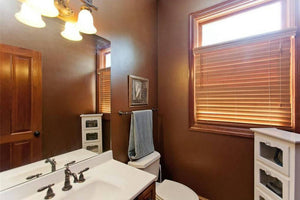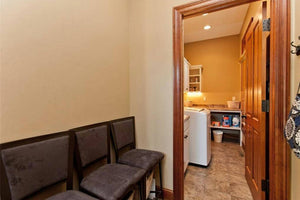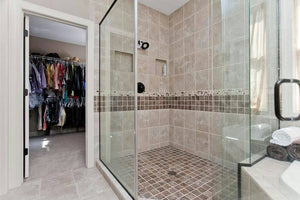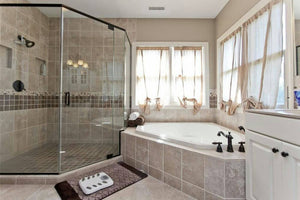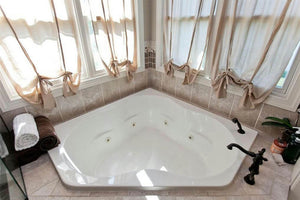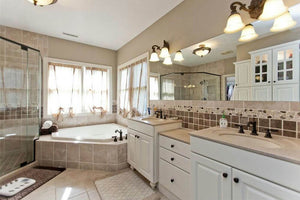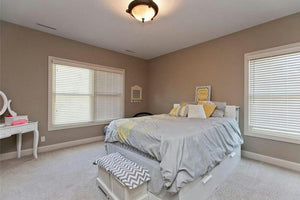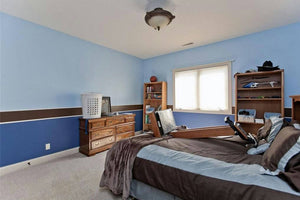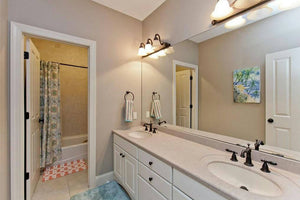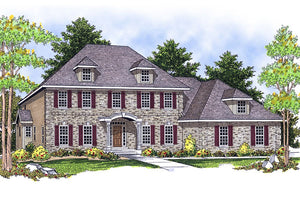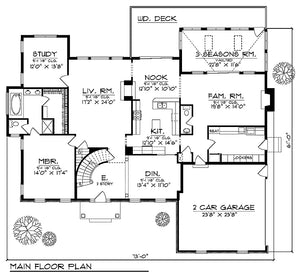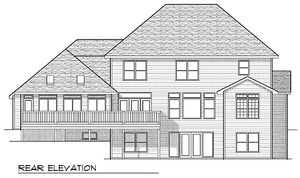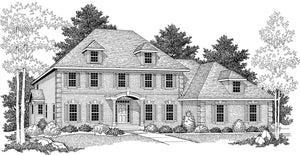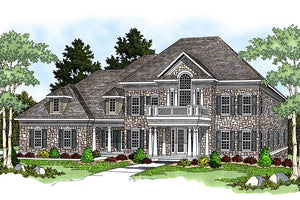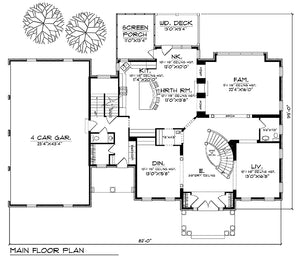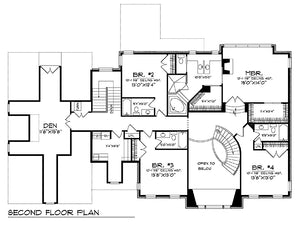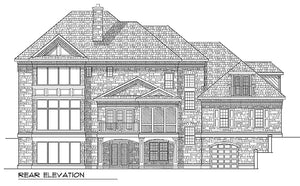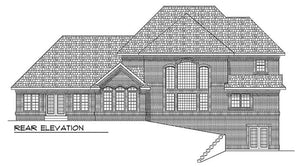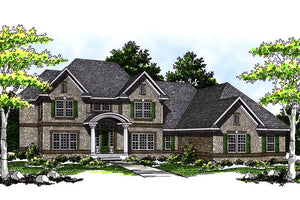Best Selling Colonial House Plans
Colonial style homes encompass a formal style reflective of the US Colonial period in the 17th century. Colonial homes are known for their symmetry with a front door that can be found in the middle of the home featuring round columns. Evenly spaced windows with shutters and paired chimneys are highlighted on the homes exterior.
Common Colonial House Plans Questions
What are the characteristics of a Colonial house plan?
Since the dawn of our nation, the Colonial house plan style has been one of the most popular in American culture. You'll find Colonial homes dating back to the 1700s on the east coast, and they're easy to pick out with their 2-story plan and symmetrical façade. Travel west of the Mississippi River and you immediately notice them disappearing as most Colonial houses are built in the north and southeast areas of the county. Over time, the Colonial house plan style became distinct through its use of geometry, and different regions of the United States added their own tweaks to provide relief from the climate.
Colonial homes are usually symmetrical squares or rectangles. They're always at least two stories, and the staircase to the second and third floors usually bisects the home down the center. This places the stairway as a central, dominant design element within the structure. A colonial home usually has the front door placed directly in the center of the front wall, opening right onto the staircase area. Highly formal entryways are very common on colonial homes.Some Colonial homes boast tall two-story columns that frame the central front door on the front of the home, while others have beams supporting a wide porch.
Is it more expensive to build a Colonial house plan?
Colonial homes tend to be large and spread out to accommodate room for a formal living room, formal dining room and kitchen. The central staircase is located in the center of the home off the entry with each of these rooms surrounding it. This placement of the rooms and the stairs makes the entryway of a Colonial home more formal and and impressive. The large amount of living space and multiple floors tends to incur a high maintenance cost; all that square footage needs to be heated and air-conditioned. Older Colonial homes definitely have higher utility costs, but due to the simple boxed or rectangular shape, new Colonial style homes are surprisingly simple to build which affects the total cost of labor.
We always recommend that you check with a builder in your area when choosing a house plan style to determine whether or not it is feasible within your budget restraints.
What are the pros of building a Colonial home?
The grand impression as you enter a Colonial home design is typically magnificent and if you're looking to make a statement with your family and friends, you'll definitely find it in this home plan style. Because Colonial house plans feature larger separated rooms, you'll find that they are typically larger in size with the bedrooms located on the second level. Colonial homes also tend to have beautiful, decorative staircases that are seen as you enter the home leaving a lasting impression on guests.
You'll also be able to include more bedrooms in the 2-story Colonial home style because it is simply a 2-story box with a full second level for bedrooms, some with walk-in closets and additional bathroom(s).
The Colonial home plan style is efficient in the placement of rooms around the central staircase and bedrooms on the second level making the square footage often bigger than a typical traditional house plan style.
Southern Colonial homes often featured a porch off the front of the home on the second level that were used as sleeping areas during the heat of the summer before the invention of air conditioning. Today's 2-story homes can also feature a second level porch but for much different reasons such as enjoying the morning paper and a cup of coffee.
What are the cons of building a Colonial home?
While some people consider it a pro of a Colonial house plan design, others might find the magnificent entry overbearing and showy and therefore a con. And while it's true that many 2-story Colonial homes are larger, the cost of heating and air conditioning that additional space may be deal breaker for some over time. The centrally located staircase makes it difficult to have an open concept floor plan as many people are building today so that can be considered a con as well.
Garage placement on the exterior of a Colonial home can also be tricky while trying to maintain the integrity of the style. Early Colonials had stables as cars were widely available until the early 20th century so the keeping the design symmetry of the front was relatively easy. Some of today's updated Colonial home plans have rear loading or side loading garages in attempt to maintain the purity of the style.
What materials are used on the exterior of a Colonial House plan?
Early Colonial home exteriors typically consisted of mainly siding, often painted white, because the cost of bricks was unaffordable at that time. Modern Colonial homes are often a mixture of stone and siding, brick and siding, and occasionally, you'll find a newer home that is still all horizontal siding. Colonial homes almost always have some sort of porch surrounding the central front door that is supported by round white columns. Evenly shuttered windows are also very common on a Colonial house plan, and dormers are often found on the roof from each of the upstairs bedrooms. Home colors can vary from white siding, to red brick to light limestone in Colonial homes being built in communities across the country.
Today's Colonial homes feature plans that are more open than their predecessors, a material mix on the exterior, and updated entries with staircases. While the integrity of the design has remained nearly the same, the updates for today's buyer have been favorably received by potential homeowners.































